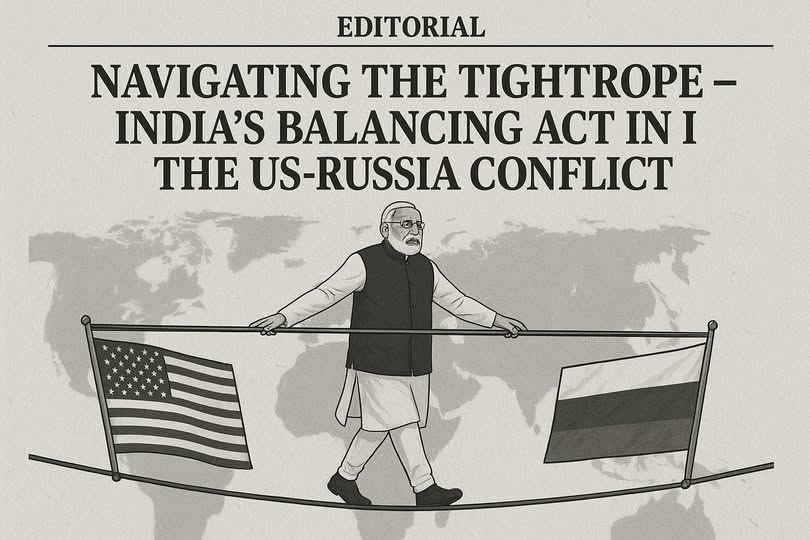Navigating the Tightrope – India’s Balancing Act in the US-Russia Conflict

In an era of global turbulence, India’s foreign policy under Prime Minister Narendra Modi has demonstrated a rare quality: strategic balance. The ongoing tensions between the United States and Russia have placed many nations in an unenviable position, forced to pick sides in a conflict that reshapes alliances and redraws geopolitical equations. Yet India has emerged as a striking example of measured diplomacy, protecting its national interests while keeping open the channels of dialogue with both Washington and Moscow.
This is not fence-sitting. It is, rather, a pragmatic assertion of India’s growing global weight. On the one hand, New Delhi has deepened its partnership with the United States across trade, defense, and technology. American support is vital for India’s Indo-Pacific strategy and for countering China’s assertiveness in the region. On the other hand, Russia remains an indispensable partner, particularly in energy security and defense cooperation. To disregard Moscow entirely would be to imperil decades of trusted engagement and undermine India’s strategic autonomy.
The Modi government has refused to be swept along by Western pressures or Cold War mentalities. Instead, it has made the case that dialogue and diplomacy are the only sustainable pathways forward. India’s consistent calls for peace, humanitarian relief, and respect for sovereignty signal a responsible global voice—one that seeks solutions, not alignments. Far from weakening India’s position, this equidistant stance enhances its credibility as a potential mediator, a bridge between polarized blocs.
Energy security has also been managed with a steady hand. By continuing to engage with Russia for discounted oil purchases, the government has shielded Indian consumers from the worst effects of global price shocks. Critics may carp about optics, but the tangible benefits to Indian households and industries cannot be dismissed. The government has shown that national interest must remain paramount, even as it engages constructively with international partners.
The United States, too, has come to recognize this reality. Washington may not always agree with New Delhi’s decisions, but it values India as a trusted partner whose strategic autonomy is an asset, not a liability. In fact, India’s independent stance strengthens the multipolar world order—where power is shared, and no single bloc dictates the future.
As the US-Russia confrontation grinds on, India’s role is not to take sides, but to stand tall for peace, stability, and its own national priorities. The Modi government’s careful calibration has ensured that India does not become collateral damage in a conflict not of its making. In doing so, it has underscored the principle that sovereignty abroad begins with sovereignty at home—over energy choices, defense partnerships, and diplomatic strategy.
India’s tightrope walk is not a weakness. It is a strength. It reflects maturity, foresight, and the confidence of a nation that knows its place in the world is not to be dictated, but to be defined.